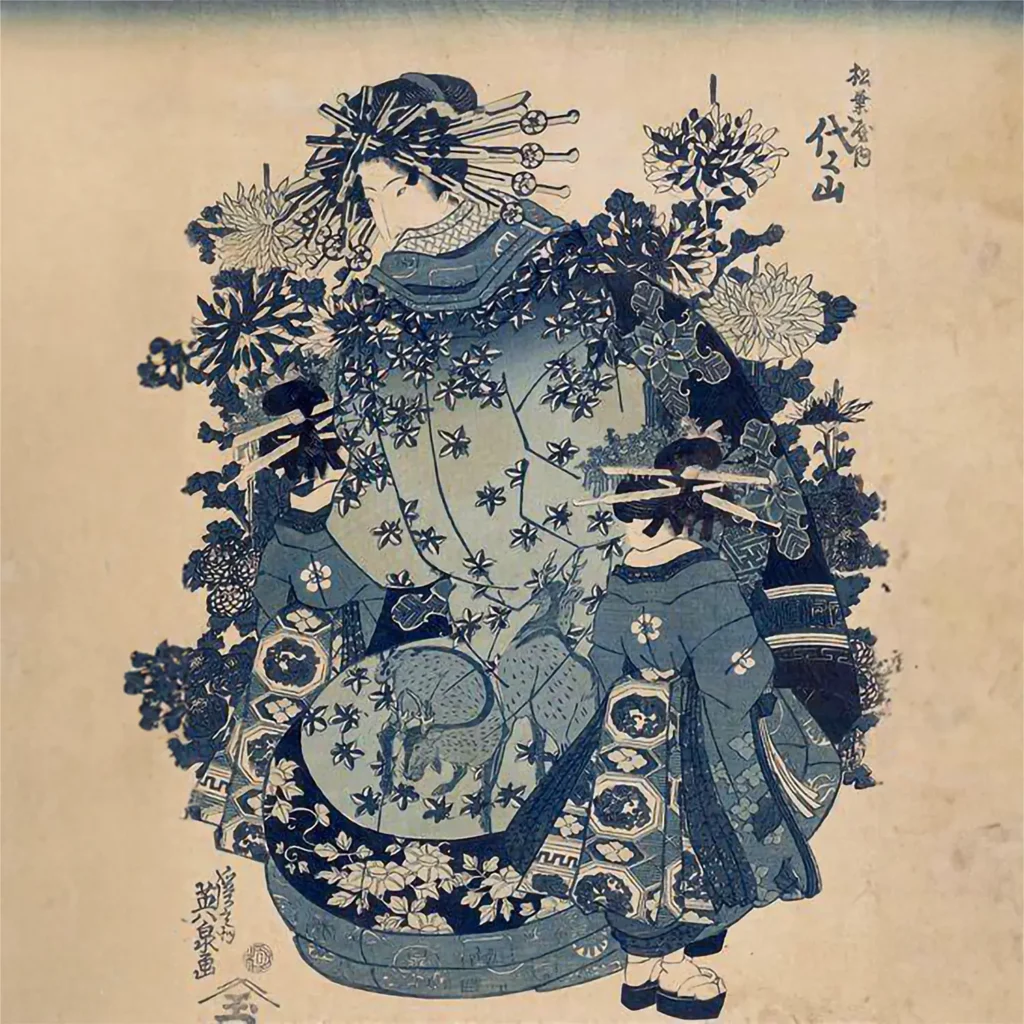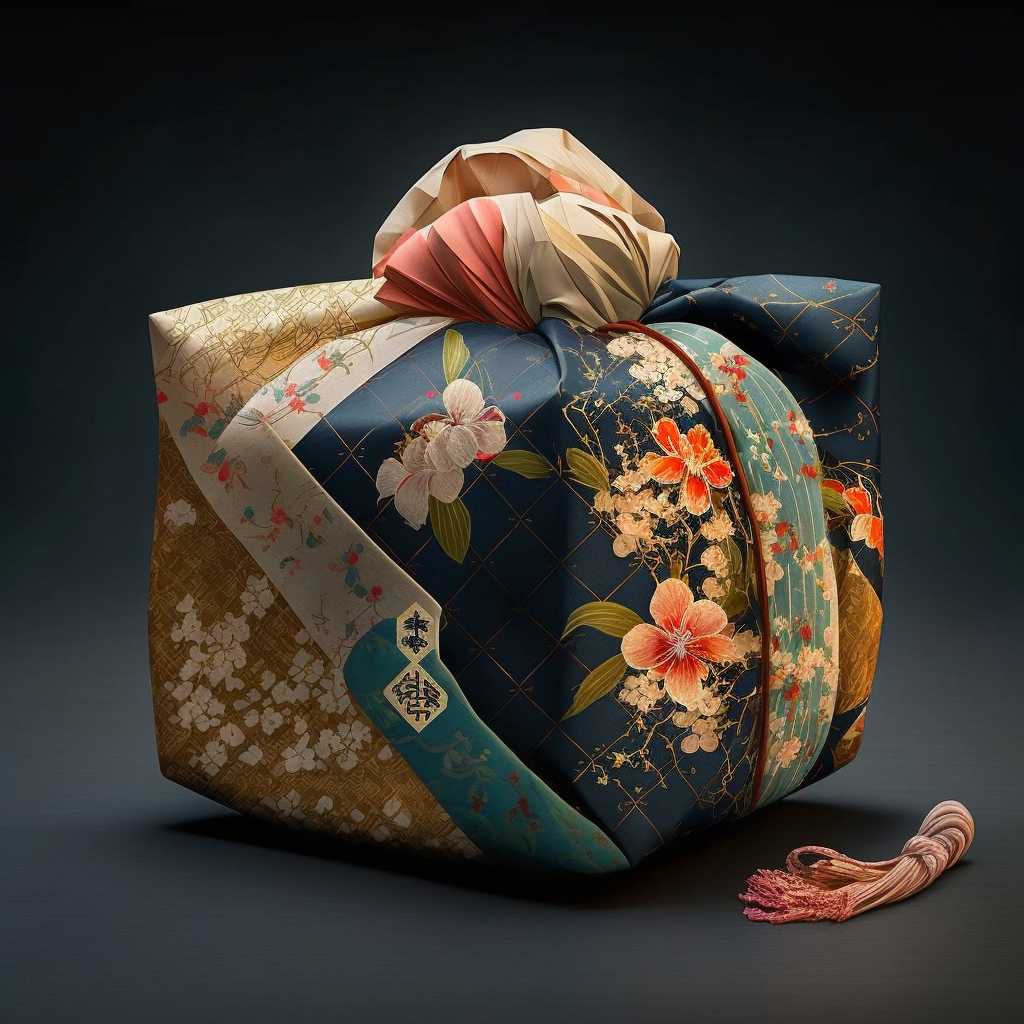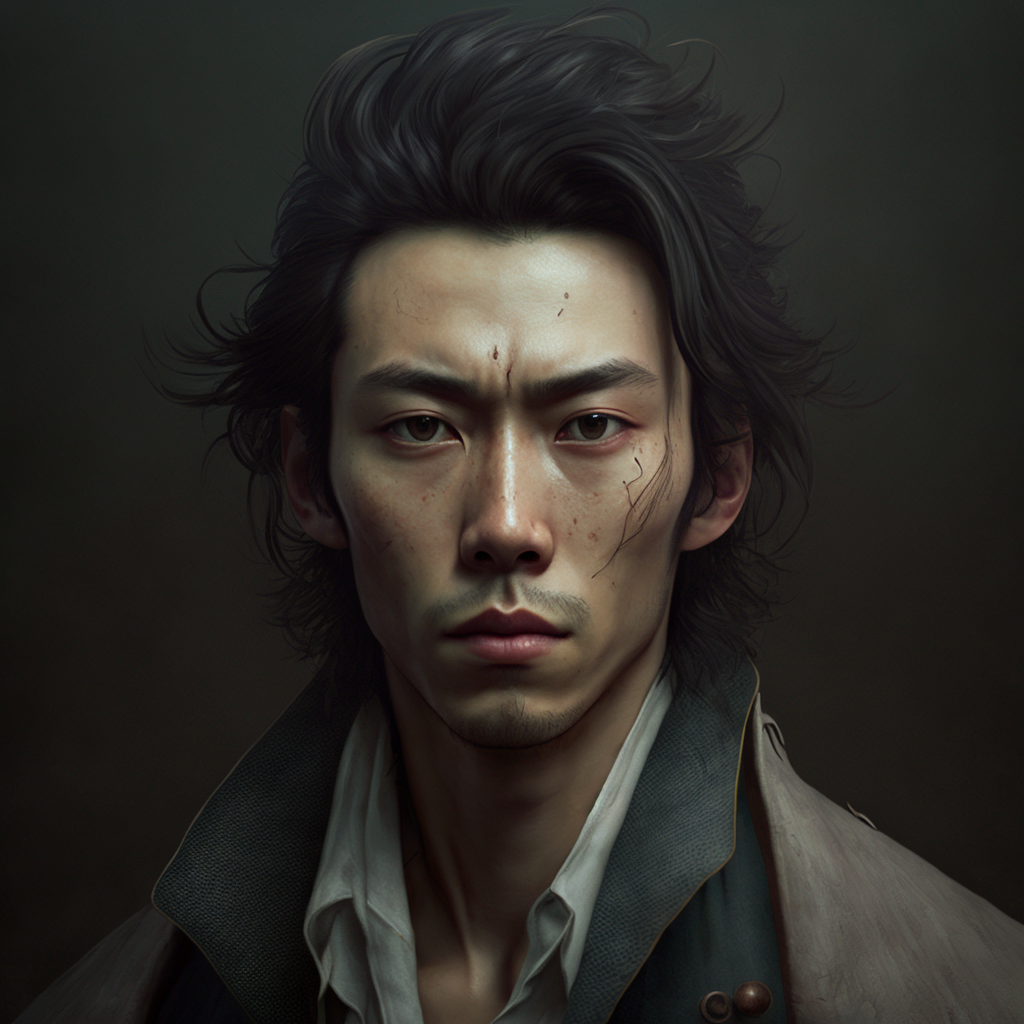AIZURI-E prints are a type of traditional Japanese prints that gained popularity during the Edo period (1603-1868). Unlike more common ukiyo-e prints, which used a wide range of colors, AIZURI-E prints are characterized by a color palette mostly dominated by different shades of blue.
Origin and Meaning
The term “AIZURI” refers to the bright blue color used in these prints. It derives from the Japanese word “Aizuru”, which literally means “to print in blue”. AIZURI-E prints were often made with indigo-based blue inks, creating striking visual effects.
These prints were mostly produced by anonymous artists and were often used to depict everyday scenes, landscapes, kabuki actors, courtesans, and other popular subjects of the time. They were appreciated for their unique aesthetics and their ability to capture atmosphere and emotions in a subtle way.
Production techniques
AIZURI-E prints were made using a woodblock printing process similar to that used for ukiyo-e prints. However, the use of predominantly blue colors required special mastery of printing techniques and ink mixtures.
The artists began by drawing a sketch of the composition on rice paper. Then, specialized engravers would carve blocks of wood in relief, one for each color. Each block was then precisely inked and pressed onto the paper to create the final image.
Influence and Legacy
AIZURI-E prints have exerted a significant influence on other Japanese art forms, especially in the fields of painting, ceramics and fashion. Their distinctive use of the color blue has inspired many artists and designers to explore new creative expressions.
Today, AIZURI-E prints continue to be enjoyed by collectors and art lovers around the world. Exhibitions and specialized museums are dedicated to them, allowing visitors to discover the beauty and richness of this unique art.
Conclusion
AIZURI-E prints are a fascinating testimony to traditional Japanese art. Their use of the distinctive blue color and their ability to capture the essence of everyday life in the Edo period make them unique and valuable works of art. Whether for their aesthetic value or for their historical significance, AIZURI-E prints continue to fascinate and inspire art enthusiasts around the world.
Sources:
- Smithsonian Institution – https://www.si.edu/
- The Metropolitan Museum of Art – https://www.metmuseum.org/
- Japan Society – https://www.japansociety.org/



